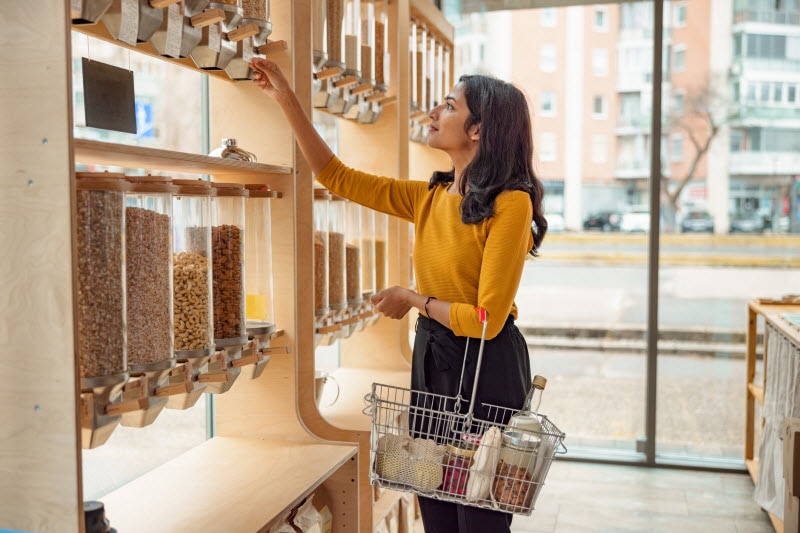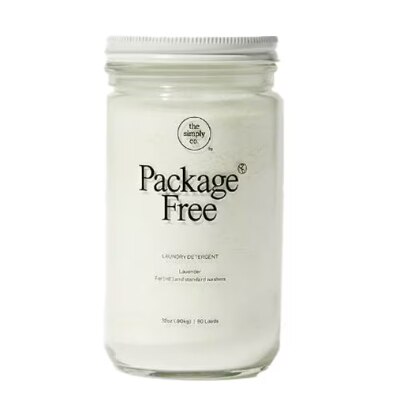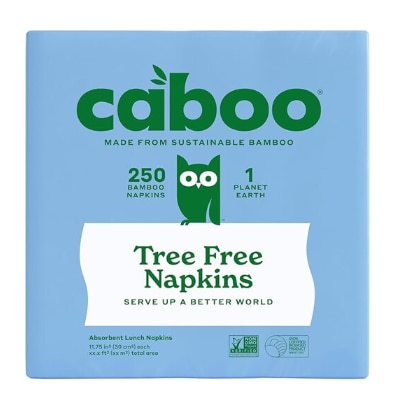America loves its stuff. From fast fashion T-shirts to two-day delivery furniture, we live in a system that’s based on a conveyor belt mentality. It goes like this: take, make, toss, repeat. According to a 2020 report, we now consume more than 100 billion tons of materials every year globally and the U.S. leads the pack.

Your part in it? The average global citizen consumes more than 13 tons of materials per year. Consumption in itself isn’t inherently bad; the problem lies in the fact that we’ve built an economy that depends on replacing stuff too fast. In other words, too much, too soon rather prioritizing longevity over convenience.
Enter the circular economy, a paradigm that asks a simple question: What if waste wasn’t inevitable? Instead of the straight line from factory to landfill (cradle to grave), a circular system loops materials back into use through repair, reuse, sharing and smarter design (cradle to cradle). It asks consumers not to deprive themselves but to be more discerning with their choices.
Here’s how that looks when you put it into action in your everyday life.
What is a circular economy?
Buy less, buy better
The most circular thing you can do is to stop treating shopping as a hobby. Before buying something new, pause and ask the most underrated question in sustainability: Do I actually need this? “Refuse” lurks in the shadows of the typical reduce-reuse-recycle triangle because it’s the hardest concept to sell in a consumer culture.
Every time you refuse to buy something new and stick with the old, you give the circular economy a boost. The idea behind the circular economy is instead of extracting, using and dumping, keep materials in play for as long as possible, through repairing, reusing, sharing and remaking. Every time you buy something that lasts, you’re voting for durability over disposability.
Try this:
- Go quality over quantity. A $90 cast-iron pan you’ll use for decades beats five $20 pans that warp in a year.
- Support brands that repair. Patagonia’s Worn Wear and Darn Tough’s lifetime-guarantee socks prove repairability can be a selling point.
- Buy secondhand first. Thrift stores, local vintage shops and refurbished tech marketplaces (Back Market, eBay Refurbished) keep goods circulating and usually save you money.
Love food, hate waste
Food is one of the easiest and most meaningful places to start. Around 30 to 40 percent of food in the U.S. never gets eaten, which means all the water, land and energy behind it go to waste too.
Try this:
- Shop your fridge first. Plan meals around what’s already in there. Try the “Eat First” bin trick, a simple refrigerator hack to reduce food waste by designating a bin for items that need to be eaten soon. Use a clear container to store food nearing its expiration, such as leftovers, produce or open containers, and place it prominently in the front of the fridge so it’s the first thing you see. You can even label it “eat me first.”
- Get creative with scraps. Broccoli stems become slaw; stale bread becomes croutons. Websites like Love Food Hate Waste are full of ideas.
- Compost what’s left. If your city offers curbside composting (San Francisco, Seattle, Boulder, NYC are ahead here), great. If not, a small bin or backyard tumbler does the job.
- Eat more plants, as shifting toward more plant-based meals is circular too. Producing a pound of beef can require over 15,000 liters of water. Beans, grains and vegetables stretch resources further without sacrificing flavor.
- Try apps like Too Good to Go, which connects users with local restaurants, bakeries, cafes, and grocery stores to buy their unsold, surplus food at a discounted price. This helps combat food waste by ensuring perfectly good food doesn’t end up in landfills.
If you care, repair
In a circular economy, “broken” isn’t the end. It’s the beginning of a repair love story. If the item can be repaired and the cost of doing so is less than 50 percent of the item’s replacement cost, explore the satisfying world of the fix.
Start small:
- Learn a few fix-it basics. Sewing a button, gluing a shoe sole or swapping a laptop battery keeps goods alive longer than you’d think.
- Look for repair cafés or “fix-it clinics.” They’ve popped up everywhere, often in maker spaces or libraries, where volunteers help neighbors repair everything from lamps to jeans.
- Back the right-to-repair movement. Several U.S. states now require companies to make repair manuals and parts available, making it a win for both consumers and circularity.
- Even simple maintenance counts, such as sharpening knives, cleaning filters, maintaining appliances. Upkeep may not be as sexy as new with tags, but it’s a quietly radical act of love.
Share more, own less
Ownership made sense when things were scarce. Now it often means clutter and overstuffed garages. Sharing rarely-used items keep products in circulation and saves everyone money.
Ideas to try:
- Tool libraries. Borrow a power drill or sander instead of buying one you’ll use twice. (Check if your local library or community center runs one.)
- Clothing swaps. Gather friends, neighbors or coworkers; make it a quarterly or biannual ritual.
- Mobility sharing. Car-share apps, e-bikes, and community rides reduce emissions and underused vehicles
Circular thinking turns access into the new luxury. You don’t need to own everything to benefit from its occasional use.
Choose local
Circularity often looks like something your grandparents already did, privileging local shops and repair services and developing long relationships with those businesses. The smaller the loop, the stronger it holds.
Try this:
- Shop close to home. Farmers’ markets, refill stores and co-ops keep money in the community and cut transport emissions.
- Support local repair pros. Cobblers, tailors, appliance shops, all the “fix-it” trades are the backbone of a working circular system.
- Advocate for better infrastructure. Ask your city about textile or e-waste recycling, refill stations, or compost pickup. A refill station is a spot—often inside a grocery store, co-op, or an entire dedicated zero-waste shop—where you can refill reusable containers instead of buying new packaging every time. These services grow when people demand them.
Get creative with reuse
The best recycling bin is the one you never need. Before tossing anything, think about whether it could have a second life.
Try this:
- Glass jars become pantry containers.
- Old T-shirts make excellent cleaning rags.
- Shipping boxes are gold for moving, storage or neighbor swaps.
Upcycling is about resourcefulness. The same mindset that fueled the Depression-era “make do and mend” can thrive in a digital age.
Rethink “away”
There’s no such place as “away.” The U.S. sends millions of tons of “recycled” materials abroad every year, much of which ends up incinerated or dumped. Real circularity means dealing with materials here at home by reducing them in the first place. When we see waste as a design flaw instead of a consumer failure, it changes everything.
Try this:
- Choose products with minimal or refillable packaging.
- Support refill stations for soap, detergent or pantry staples.
- Bring your own containers and bags, a humble yet effective habit.
Reward good design
Some companies are rethinking their products from the inside out, making circular choices easier for consumers. Voting with your wallet is a signal to the market that longevity, repair and reuse matter.
Check it:
- Rothy’s makes shoes and bags from recycled plastic bottles and offers a recycling take-back program.
- Loop delivers groceries and personal-care items in reusable containers that get picked up, cleaned, and refilled.
- Apple now uses 100 percent recycled aluminum in many devices and has robots that recover rare metals from old iPhones.
Everything doesn’t need doing
Circular living is less about virtue signaling and more about momentum. Maybe you still order takeout in plastic containers, but you repair your sneakers and shop thrift. That’s progress. The tipping point begins when enough people quietly do things differently.
A few rules of thumb:
- Start where it’s easy. Pick one area, such as clothes, food or tech and focus there.
- Share what works. Your friend might learn about composting from you; you might learn about refill stores from them.
- Don’t guilt-spiral. The point is to create new habits, not shame yourself for what you are not doing.
The bigger picture
If everyone in the U.S. made modest changes such as cutting food waste, repairing what we own, sharing more and buying smarter it could slash national emissions and resource use by double digits. Circular living is an antidote to burnout economics: buy less, maintain more, value durability. We design a better system than one that profits from early-onset obsolescence. Alongside saving resources, we also save our integrity and do our small part for the planet.
Featured Products



The post Repair, Reuse, Refuse: A Practical Guide to Circular Living first appeared on The Upside by Vitacost.com.
